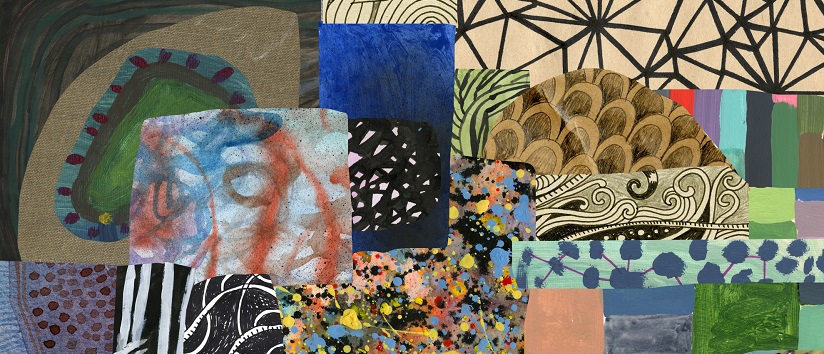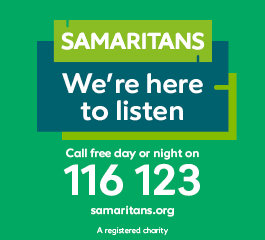Scrapbooking, art, depression, and anxiety: how creativity can aid mindfulness
25 August 2021
Ever struggle with mindfulness activities such as yoga, meditation or even taking slow nature walks? For many people, achieving the calm and presence necessary to truly get the most out of meditation and yoga is too much of a struggle. What if some simple at home arts and crafts could be the key to grounding yourself in the now?
Drawing and art
When choosing art and drawing as a replacement for mindfulness techniques such as yoga or meditation, it’s important to remember that the goal is not to achieve something specific. For many of us, art is tied up in the rigid expectations of school and education.
Drawing for yourself to feel present and mindful is an entirely different task. Depending on what kind of self-care you want the drawing or art to serve there are many different ways to engage:
Create your own colouring in pages or buy some colouring in books: if you’re feeling a little to unconfident to dive right into painting an abstract scene, or drawing from life creating your own geometric colouring in pages is surprisingly easy; all you need is a fine-line ink pen and some grid paper! Why not start by trying to create your own mandala? Alternatively there are some great ‘adult colouring books’ on the market that are great to dive into whenever you feel like you need to switch your mind off and concentrate on the present.
Mindful doodles: those two words might sound contradictory because we often think of doodles as something we do when we aren’t so present, but viral TikTok creators such as @tamaramicheal_ prove that super simple and easy to follow mindful doodles can be both extremely soothing to watch and to do yourself.
Freewriting, but with painting or drawing: most people have heard of freewriting, you are often given a starting point such as a statement or question and you write consistently with no editing, no crossing out, for an allotted amount of time. This activity can be easily applied to drawing and painting if you’re feeling a little more experimental. Choose a topic, statement or question and simply paint or draw away – the important thing here is: no erasing and going back over, mistakes are welcome and just another part of the creative process to keep you totally in the present and simply enjoying the act of drawing or painting.
Why does it work?
Engaging in the act of drawing, colouring, or painting helps us to achieve ‘flow’ which we covered in a previous blog post. Many of the troubling symptoms of anxiety and depression leave a person feeling completely trapped in their own head, whether it be running through infinite catastrophised scenarios or ruminating on things that have happened in the past. Achieving flow through art and drawing allows us to be totally present and immersed in the act of creating. Some studies have found that this kind of art therapy is an efficient way to relieve the stress of anxiety.
- See also: 'How to reach ‘flow’ and drift your consciousness into a euphoric present'
- See also: 'The sadness paradox: how sad music can relieve a depressed mind'
- See also: 'Forest bathing: how returning to the trees can decrease symptoms of anxiety'
Scrapbooking
If you find yourself less drawn to sketching or painting, another great way to use creativity to stay mindful and ease the symptoms of depression and anxiety is scrapbooking. It engages with the same creative part of our minds that drawing does, and you get the added bonus of cutting things up and arranging them in aesthetically pleasing layouts. If you feel a little stuck on where to start, there are a number of scrapbook subscription boxes that give you all the tools you need to get going.
Why does it work?
As with drawing and painting the intricate craftwork necessary to build beautiful scrapbook pages allows us to slip into that same state of ‘flow’. Another element to scrapbooking and which is exceedingly popular in the TikTok scrapbook community is ‘ASMR’ or an ‘autonomous sensory meridian response’. ASMR occurs when our brain is triggered into a mellow sense of euphoria from sounds, textures, and visual stimuli. This feeling of mellow euphoria is highly relaxing and can induce an even deeper state of flow, allowing all focus and concentration to be on the stimuli.
The community
Many people have written about or spoken about the positive impact scrapbooking has on our mental health, from processing difficult experiences or memories, to documenting your progression as you move through a rough patch, scrapbooking combines the creative outlet of drawing and painting with the autobiographical reflection of a diary or journal.
Jeffrey Davies writing for Book Riot spoke on the benefits of scrapbooking earlier this year:
“As well as pasting in random stuff I’d kept from everywhere, I’d intersperse around them my favourite quotes, song lyrics, and anything else I felt like saving. In short, it was something for my hands to do when I was feeling anxious or out of control. And for once, it didn’t have to be perfect.”
Jeffrey also goes on to describe the act of scrapbooking as a kind of “emotional support” to process and come to terms with their diagnosis of obsessive-compulsive disorder (OCD).
Similarly, Tazhiana Gordon and Azzari Jarrett from the US who are African American women spoke to the New York Times about their experiences using scrapbooking as a way to document and process the trauma of the Black Lives Matter protests throughout late spring and summer last year.
Speaking on the backlash Ms. Gordon received after she began posting scrapbook pages on her Instagram about the protests in New York and about Blackness and its relationship with America in general, Ms. Gordon said, “That’s the thing about navigating a white space – you’re OK until you start asserting your Blackness”.
But, Ms. Gordon emphasises that scrapbooking, “feels like a radical act of self-care, to write the words of my own life…No one can take this from me”.
As is the case with many online communities, and as Ms. Gordon’s words speak to, there is a problem with the marketing and advertising of these kinds of mindful, self-care activities only being made available to and represented by, white people.
Funnelling mindfulness through creativity is a solution to some of the most debilitating symptoms of anxiety and depression, that anyone and everyone should feel as though they have access to.
As well as allowing us to be more present and mindful, Healthline says crafting and being creative is a “nonmedical way to stimulate dopamine”, which is one of the neurotransmitters thought to be lacking in people with depression. While a study on the effects of art making on anxiety levels proved that levels fell significantly after only a brief period of creativity.
When you’re in the midst of depression, having lost any and all interest in most things or when feeling high levels of anxiety and being entirely caught up in what’s happening inside your mind, not in the outside world, it can be extremely daunting and at times feel patronising to expect ourselves so try something new. However, evidence suggests that even a couple of mindful drawing or scrapbooking sessions a week, could set us on those first steps to recovery.


Comments
Write a Comment
Comment Submitted